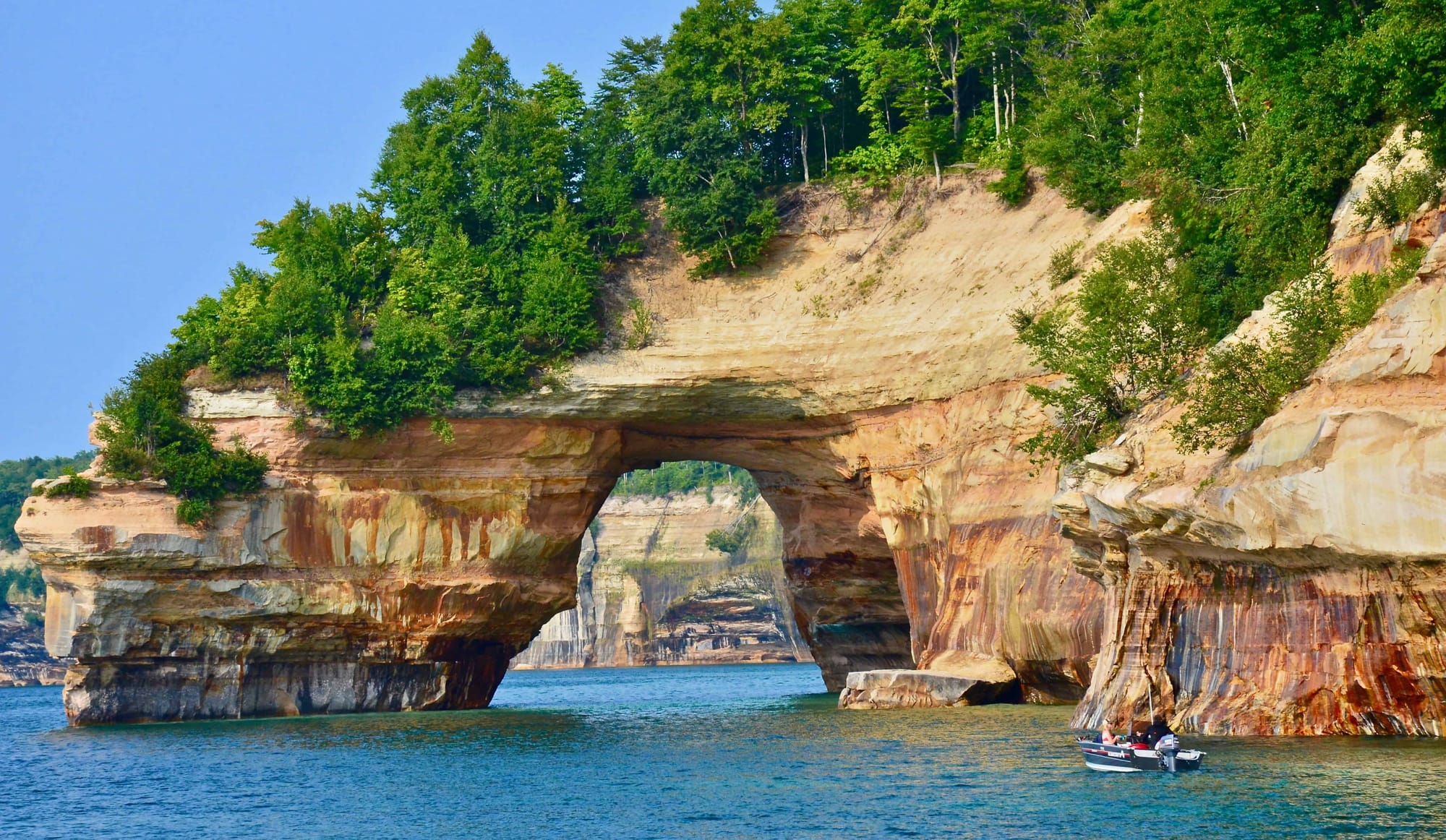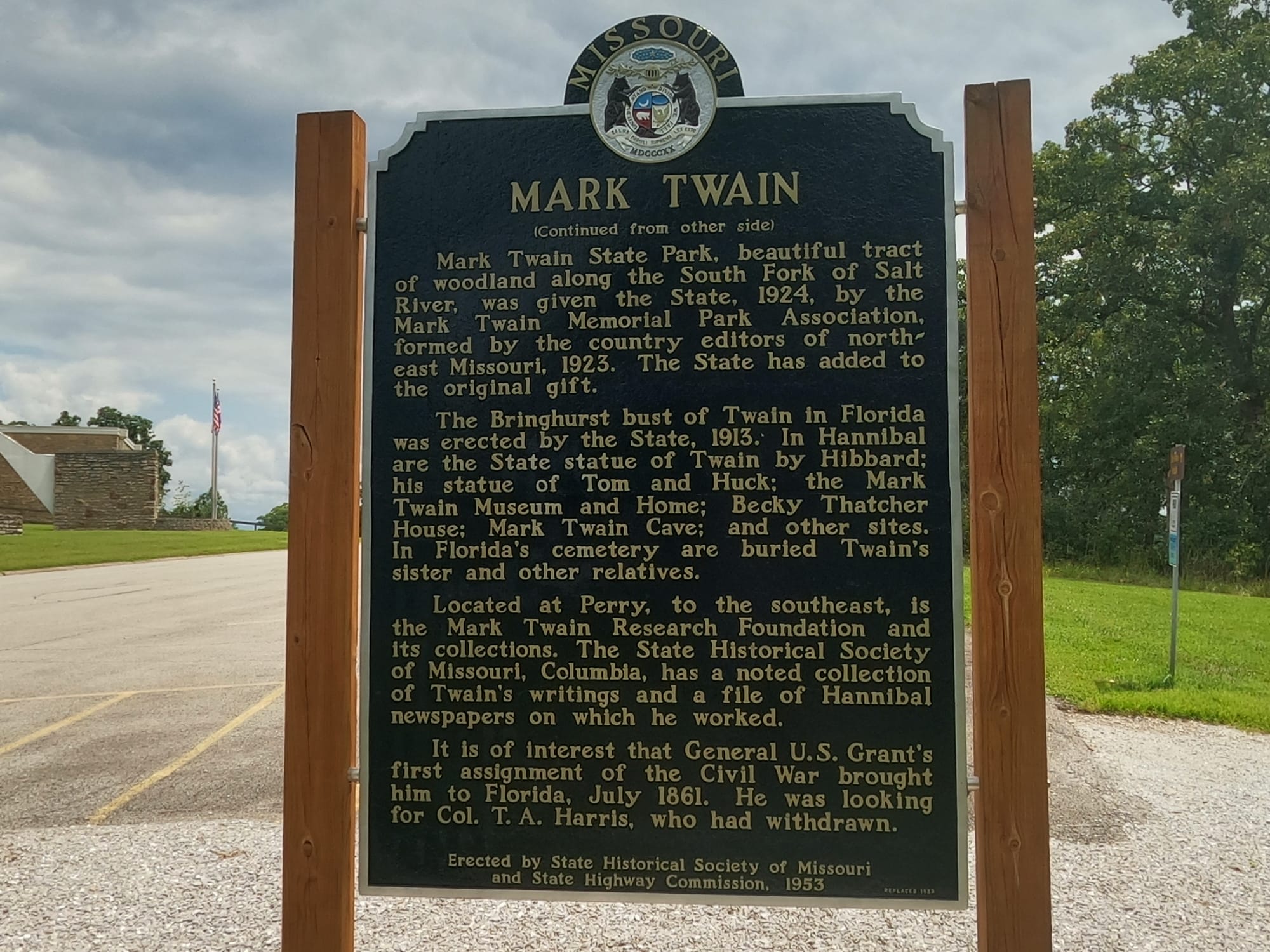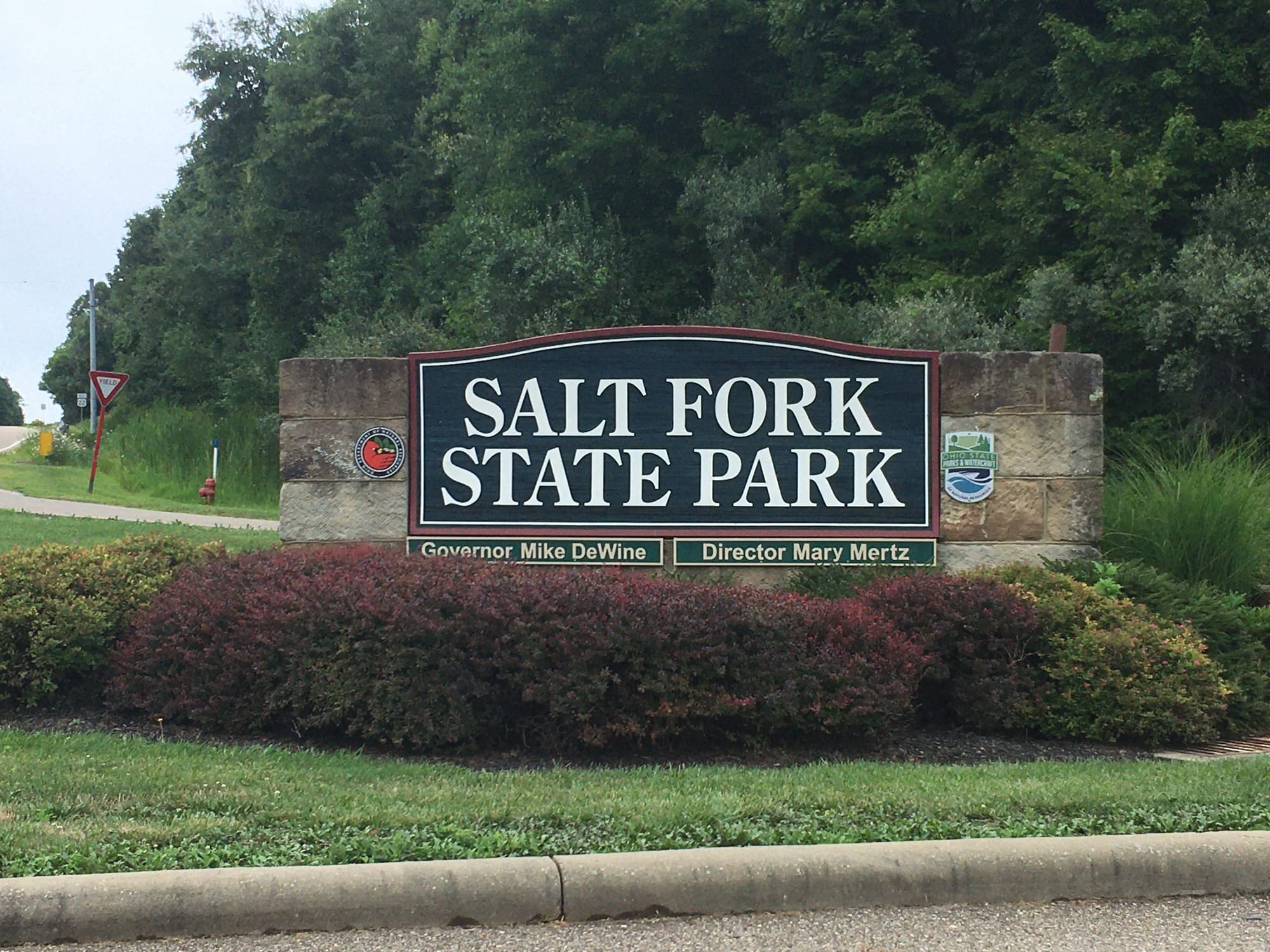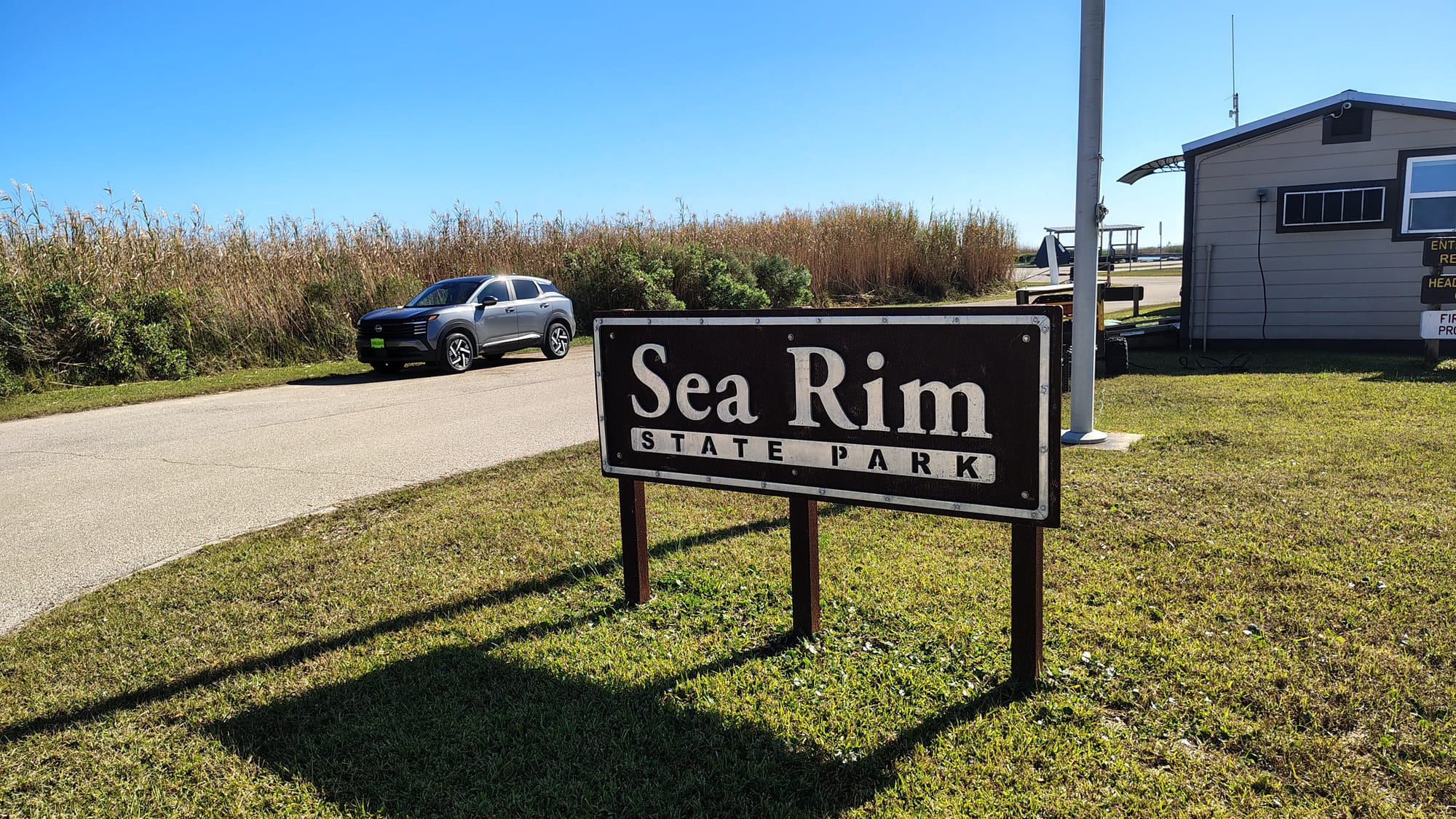
Sea Rim State Park
Trail Map
Click the map to enable zoom.
Elevation Profile
Elevation data not available for this trail.
Sea Rim State Park is located on the Texas Gulf Coast and is known for its unique combination of beach and marshland habitats.

Sea Rim State Park was established to protect and preserve the coastal environment of Texas. It opened to the public in the 1970s as part of the Texas Parks and Wildlife Department’s efforts to conserve natural landscapes. The park encompasses a variety of ecosystems, including saltwater marshes, wetlands, and sandy beaches.
The park is part of the Texas Coastal Preserve System, which strives to protect coastal wetlands, estuaries, and diverse species in the area.
Sea Rim State Park - Contact Information
- Address:
19305 S. Gulfway Drive,
Port Arthur, TX 77640 - Phone Number:
(409) 971-2559 (Park Office) - Website:
Sea Rim State Park - Texas Parks & Wildlife
Size of Sea Rim State Park
Sea Rim State Park spans approximately 4,141 acres along the Gulf of Mexico in southeastern Texas, near the city of Port Arthur. The park is a unique with a blend of coastal marshland, prairie, and beachfront. The park includes areas for hiking, camping, fishing, and birdwatching, along with a long stretch of untouched coastline along the Gulf.
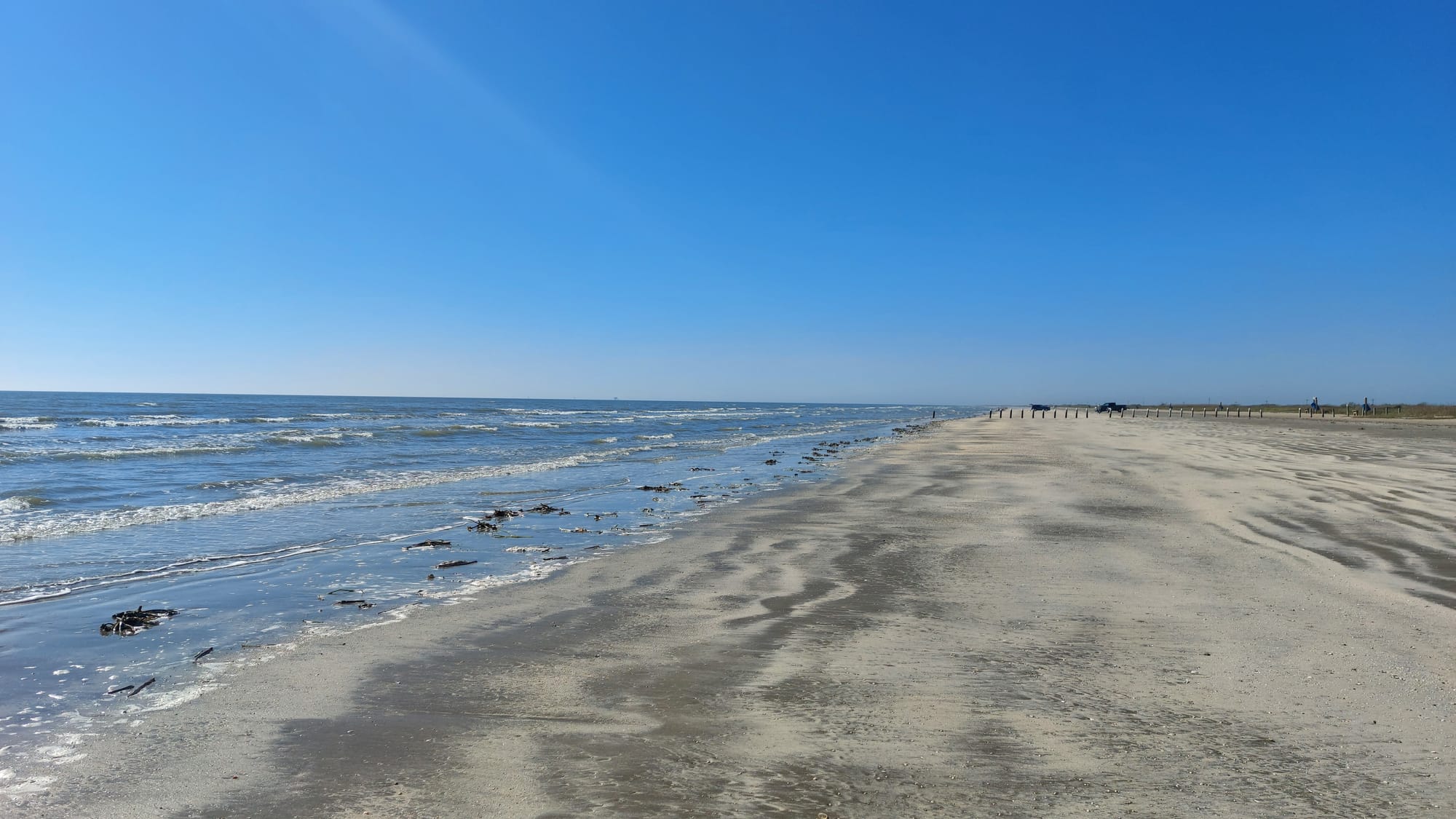
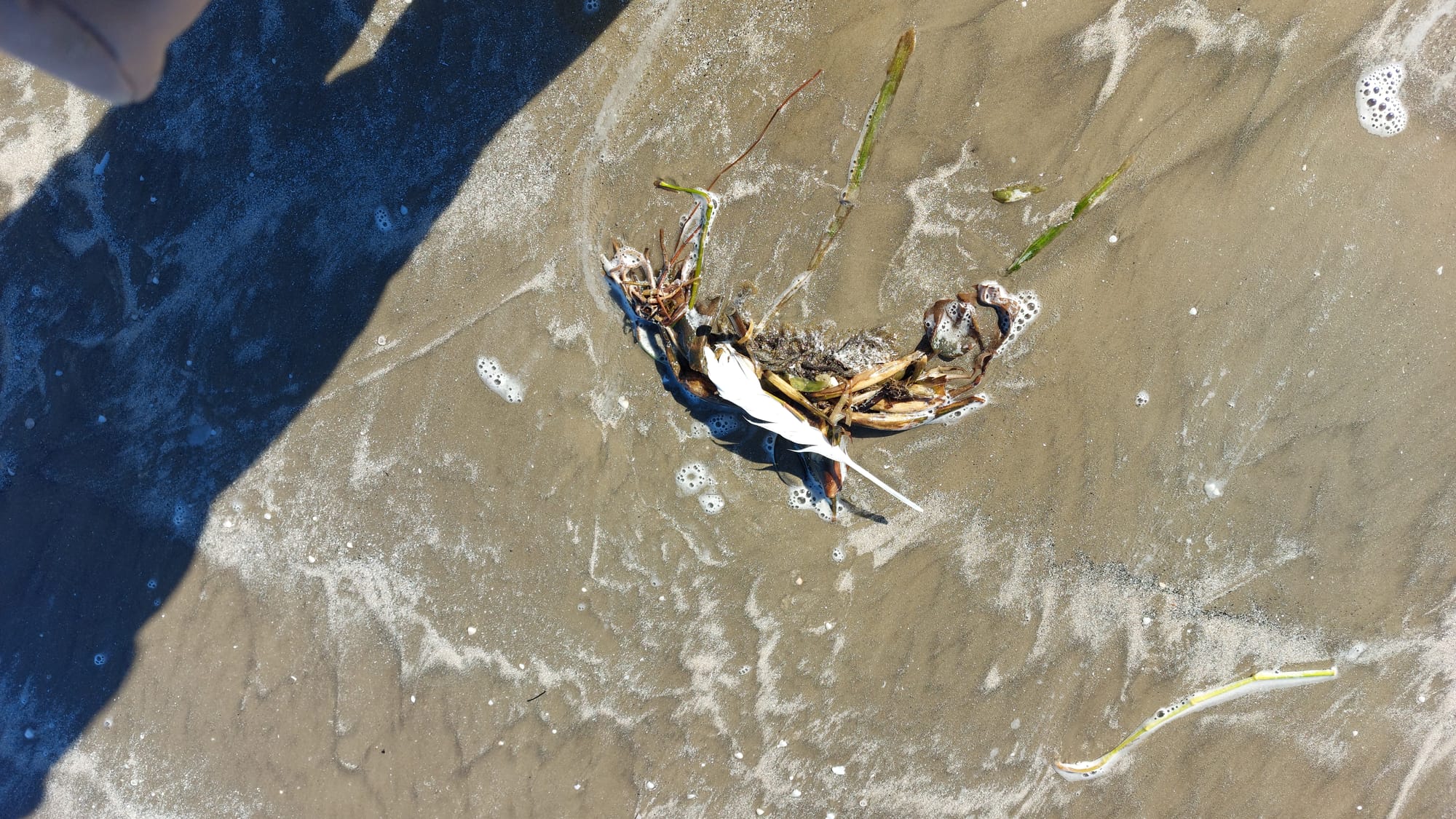
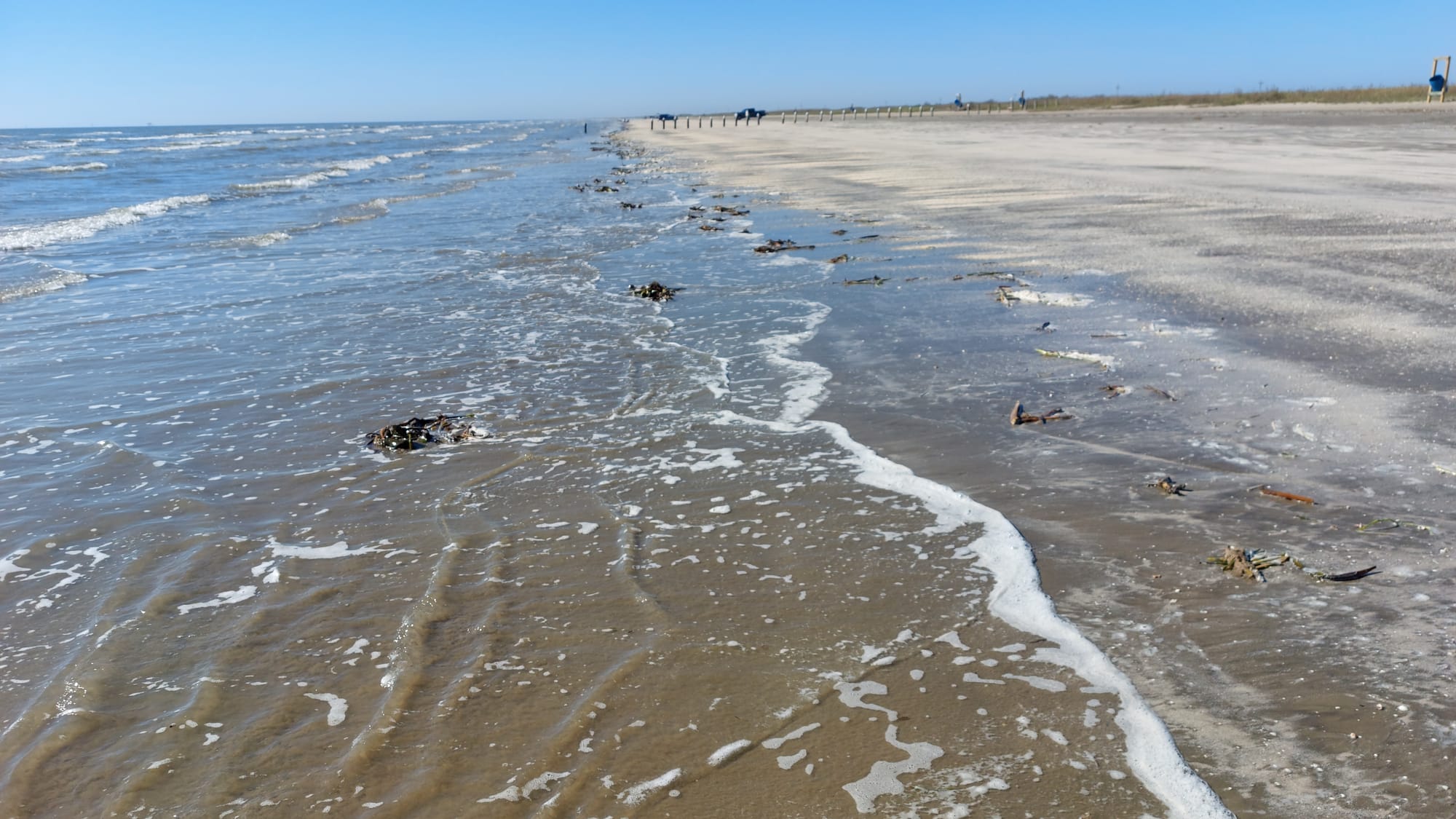
Hurricane Damages and Recovery Efforts
The development of Sea Rim State Park has focused on providing public access to the coast while minimizing the impact on the environment. In the early years, the park was relatively underdeveloped, with basic amenities. However, over time, the park has undergone several redevelopments, such as the construction of improved campgrounds, restroom facilities, boardwalks, and observation towers.
The most damaging hurricane to affect Sea Rim State Park was Hurricane Ike, which made landfall on September 13, 2008. Other storms, including Hurricane Rita in 2005, also impacted the park. Here's a detailed look at the damage caused by Hurricane Ike and its aftermath:
Hurricane Ike (2008)
- Landfall: Hurricane Ike made landfall as a Category 2 hurricane near Galveston, Texas, before continuing its path along the Gulf Coast, including the Port Arthur area where Sea Rim State Park is located.
- Storm Surge and Winds: The hurricane generated massive storm surges that inundated the park's coastal areas, reaching several feet of water above normal levels. The winds, reaching 110 mph and caused extensive damage to both infrastructure and natural landscapes within the park.
Damages to Sea Rim State Park:
- Infrastructure Damage: The park’s campgrounds, roads, facilities, and buildings were heavily damaged or destroyed. Several campsites were washed out, and the park’s visitor center was also severely impacted.
- Beach and Coastal Erosion: The hurricane’s storm surge caused significant erosion along the park’s coastline, reshaping parts of the beach and marshlands. The surge also destroyed or damaged the park's boardwalks and observation towers, which are popular with visitors for birdwatching and coastal views.
- Loss of Vegetation and Wildlife Habitats: The strong winds and flooding destroyed much of the park’s natural vegetation, including important coastal grasses and trees that are essential to the park's wildlife habitat. This led to a temporary loss of habitat for various species, particularly shorebirds and other coastal wildlife.
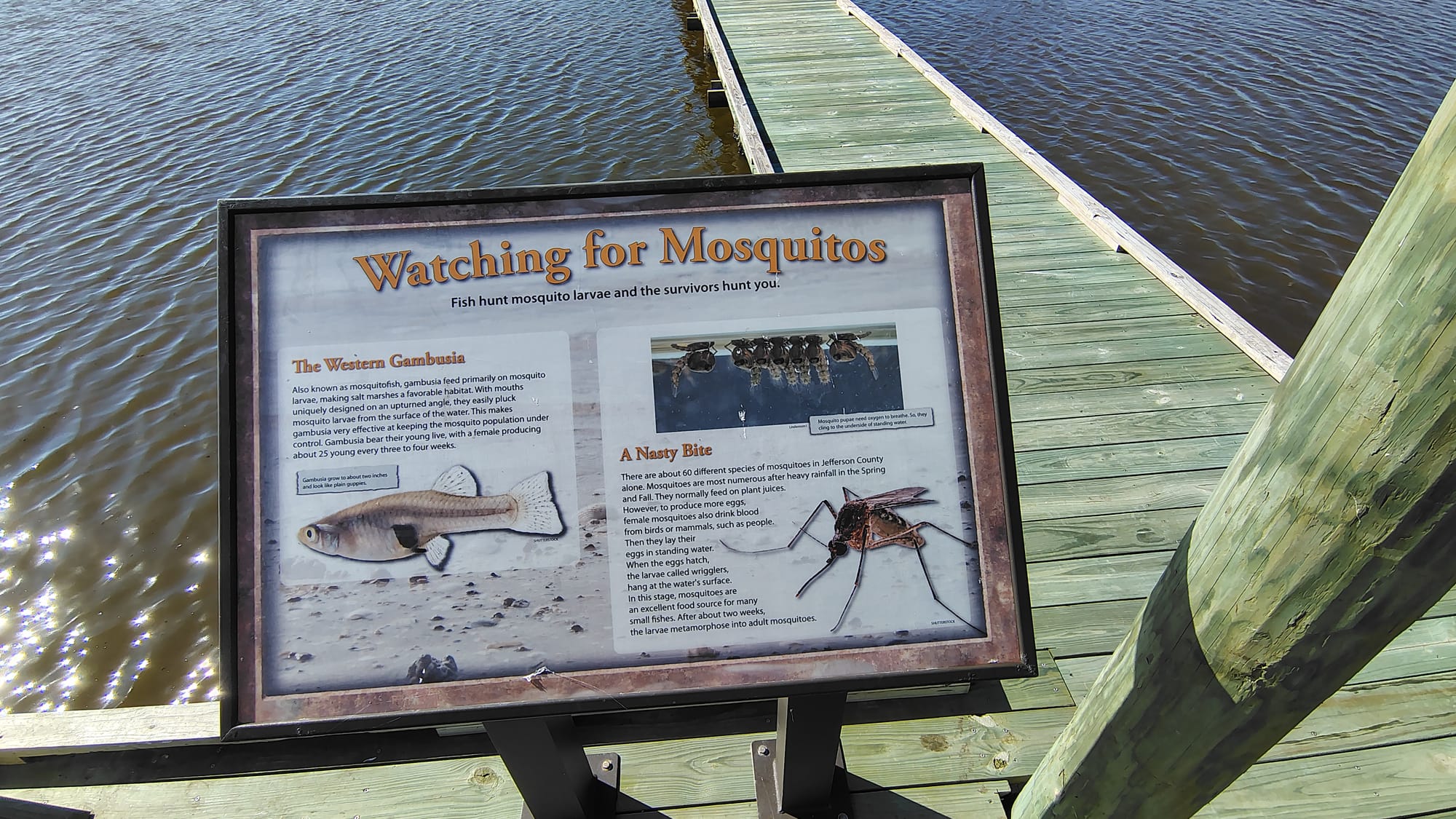
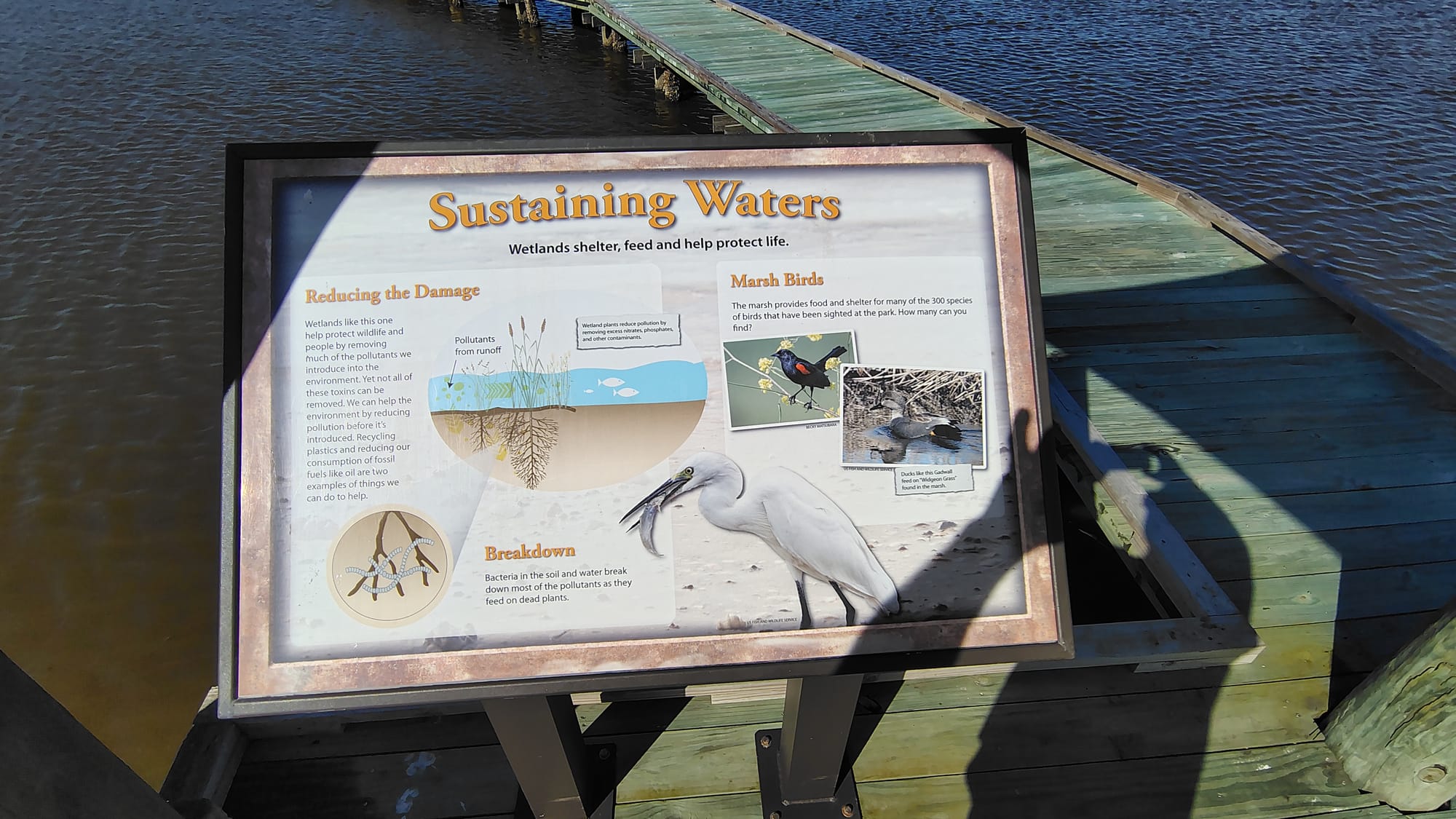
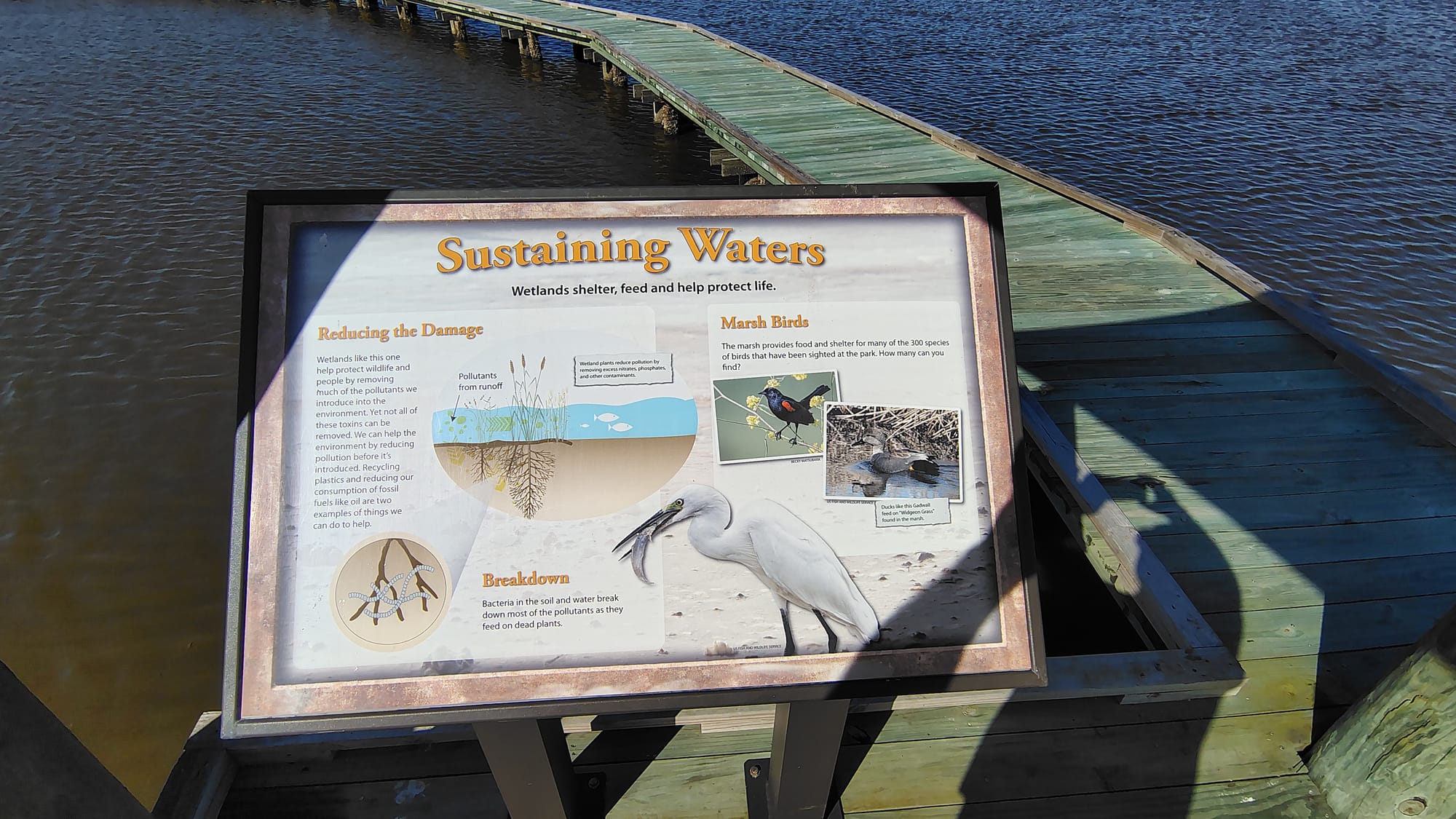
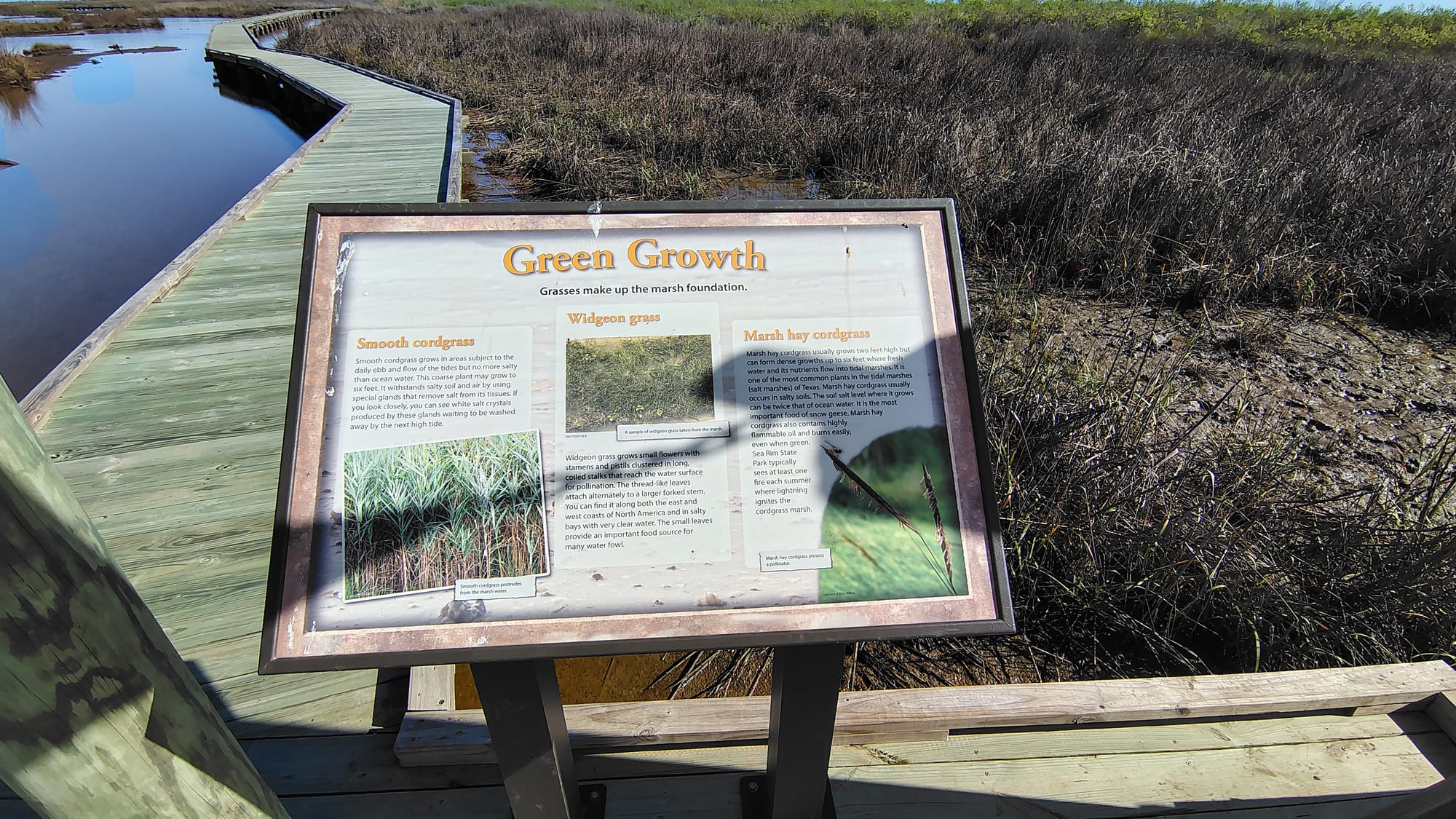
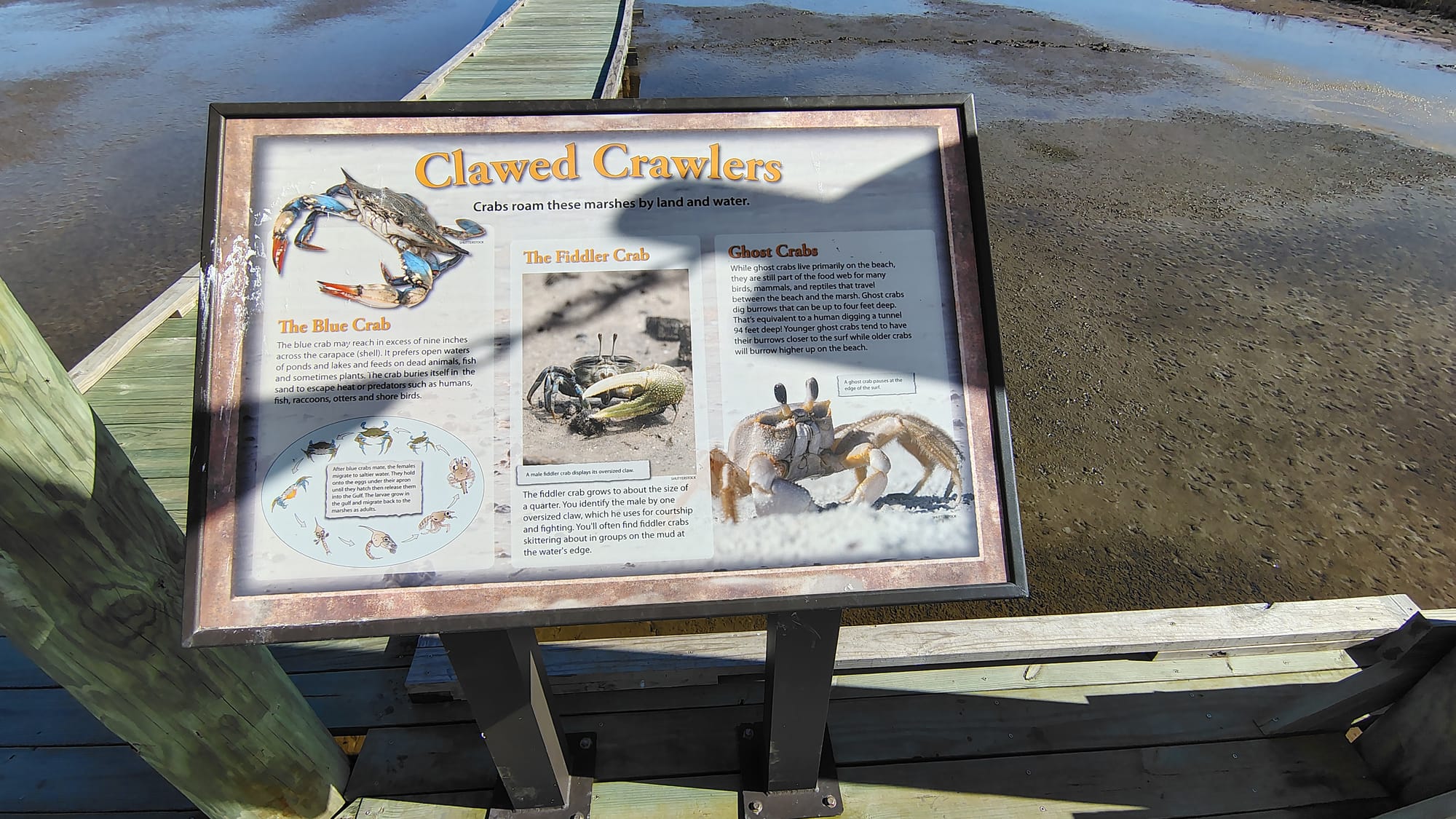
Hurricane Rita (2005)
While Hurricane Rita was not as devastating to Sea Rim State Park as Ike, it still had an impact. Rita made landfall as a Category 3 hurricane and affected much of the Gulf Coast, including the Texas coastline. The park sustained damage to trails and facilities and experienced significant erosion from the storm's winds and surge.
Post-Ike Recovery Efforts
- Reconstruction and Redevelopment: After Hurricane Ike, Texas Parks and Wildlife began a major recovery effort to rebuild the park. This included the restoration of campsites, trails, roads, and the visitor center. The park also received upgrades to make it more resilient to future storms.
- Coastal Restoration: The Texas Coastal Program, in coordination with other agencies, worked to restore the park’s coastal habitats, including the marshes and wetlands that are crucial for wildlife. Efforts focused on mitigating future erosion and protecting the park from future storm surges.
- Improvements to Infrastructure: In addition to rebuilding, new and improved boardwalks, restroom facilities, and camping areas were added, with a focus on durability and accessibility. These efforts ensured that the park could better withstand future hurricanes and storms.
- Ongoing Monitoring: Sea Rim State Park is part of ongoing coastal management and restoration efforts by the Texas Parks and Wildlife Department to monitor and protect the park from future storm impacts.
Wildlife
Sea Rim State Park is home to a diverse array of wildlife, both terrestrial and aquatic. Common species include:
- Birds: The park is an important stop for migratory birds along the Central Flyway.
- Marine life: The waters of the Gulf Coast are home to various fish species, crabs, and other marine organisms.
- Mammals: White-tailed deer, coyotes, raccoons, and rabbits can be spotted in the park’s various ecosystems.
- Reptiles and Amphibians: Sea turtles, alligators, and various species of snakes, frogs, and lizards also inhabit the area.
The marshes and wetlands are crucial breeding grounds for many species, especially waterfowl and fish.
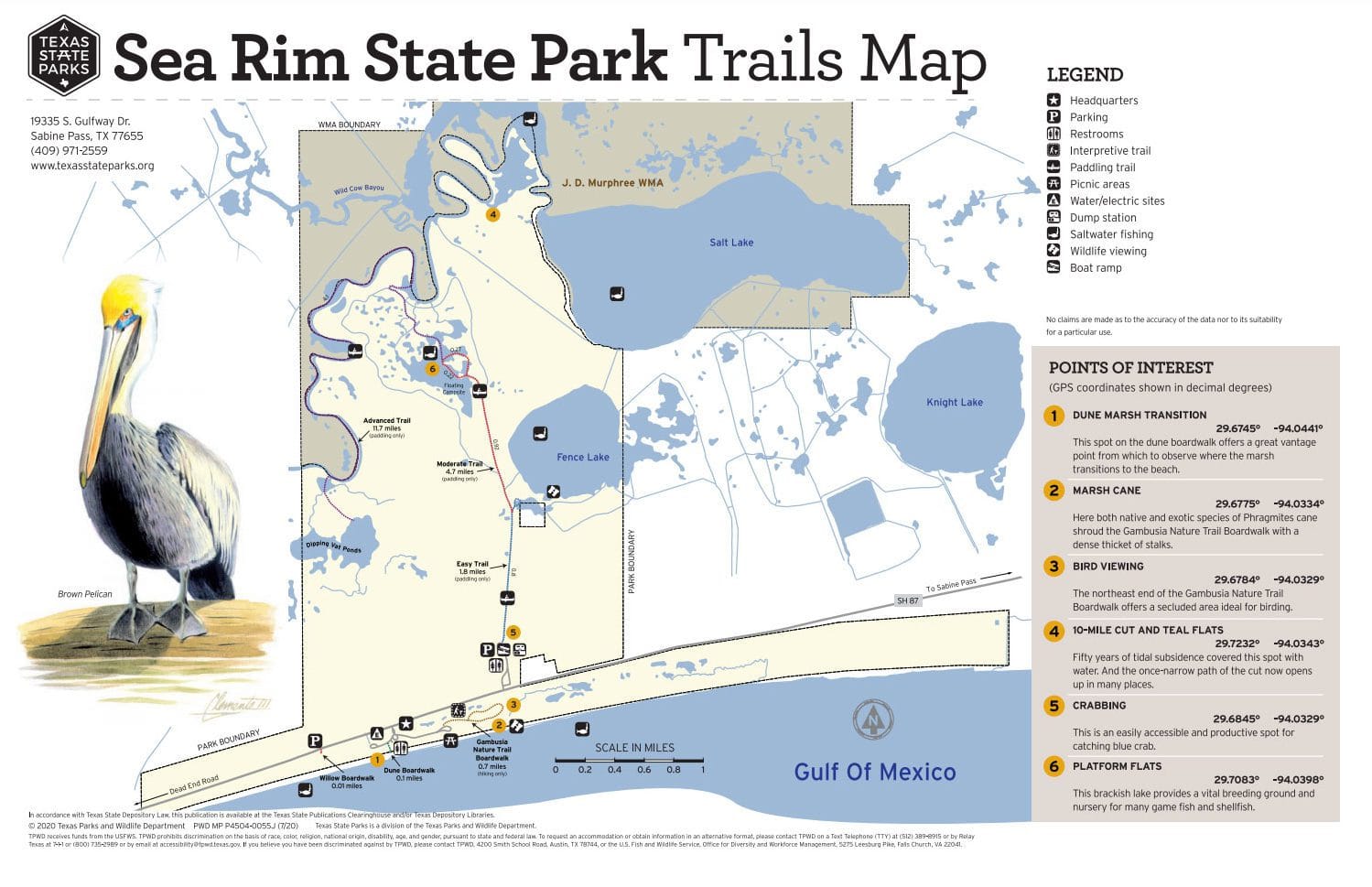
Hiking Trails: Lengths and Difficulties
Sea Rim State Park offers several trails that explore different areas of the park, each with unique challenges and scenic views.
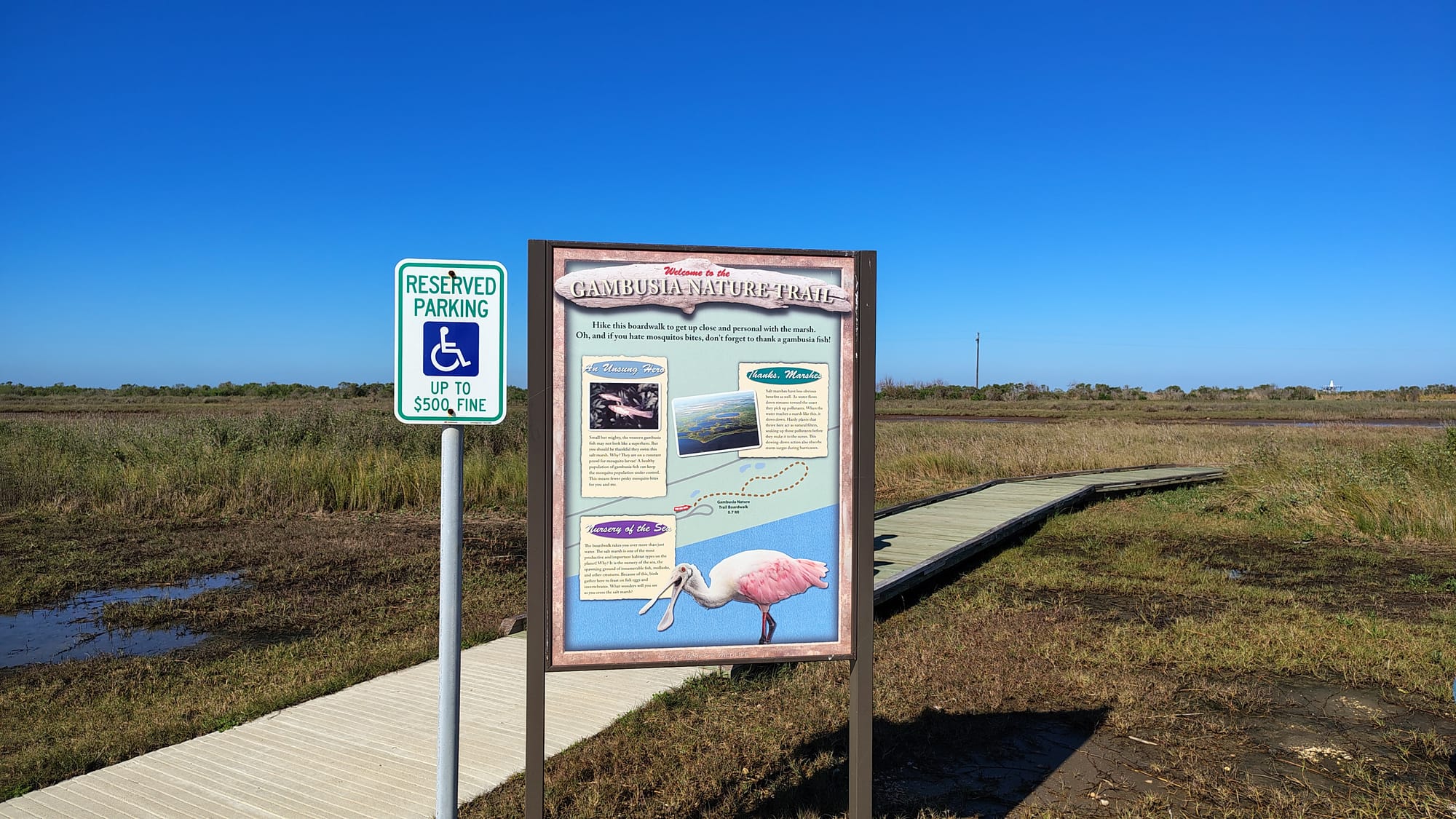
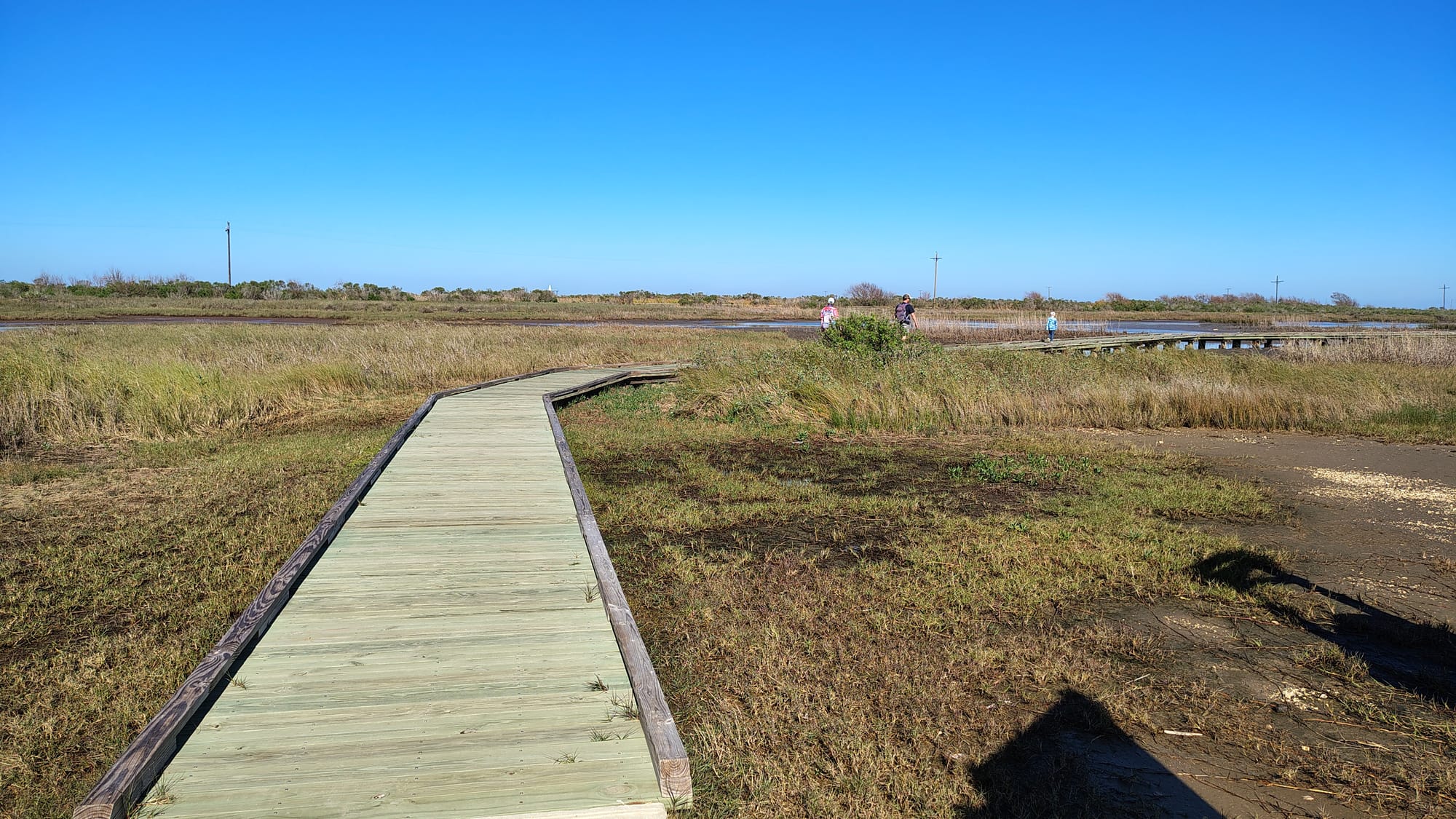
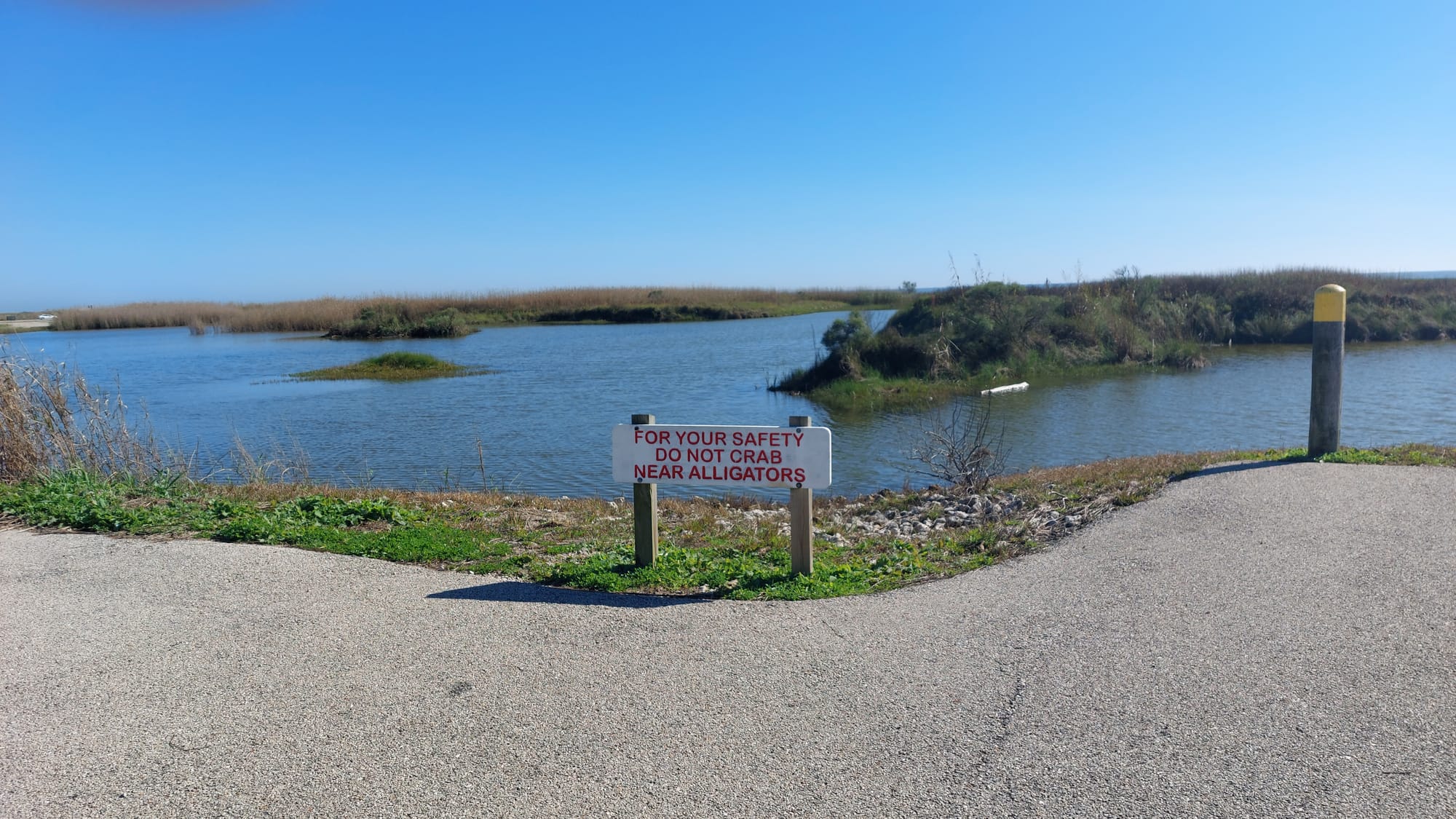
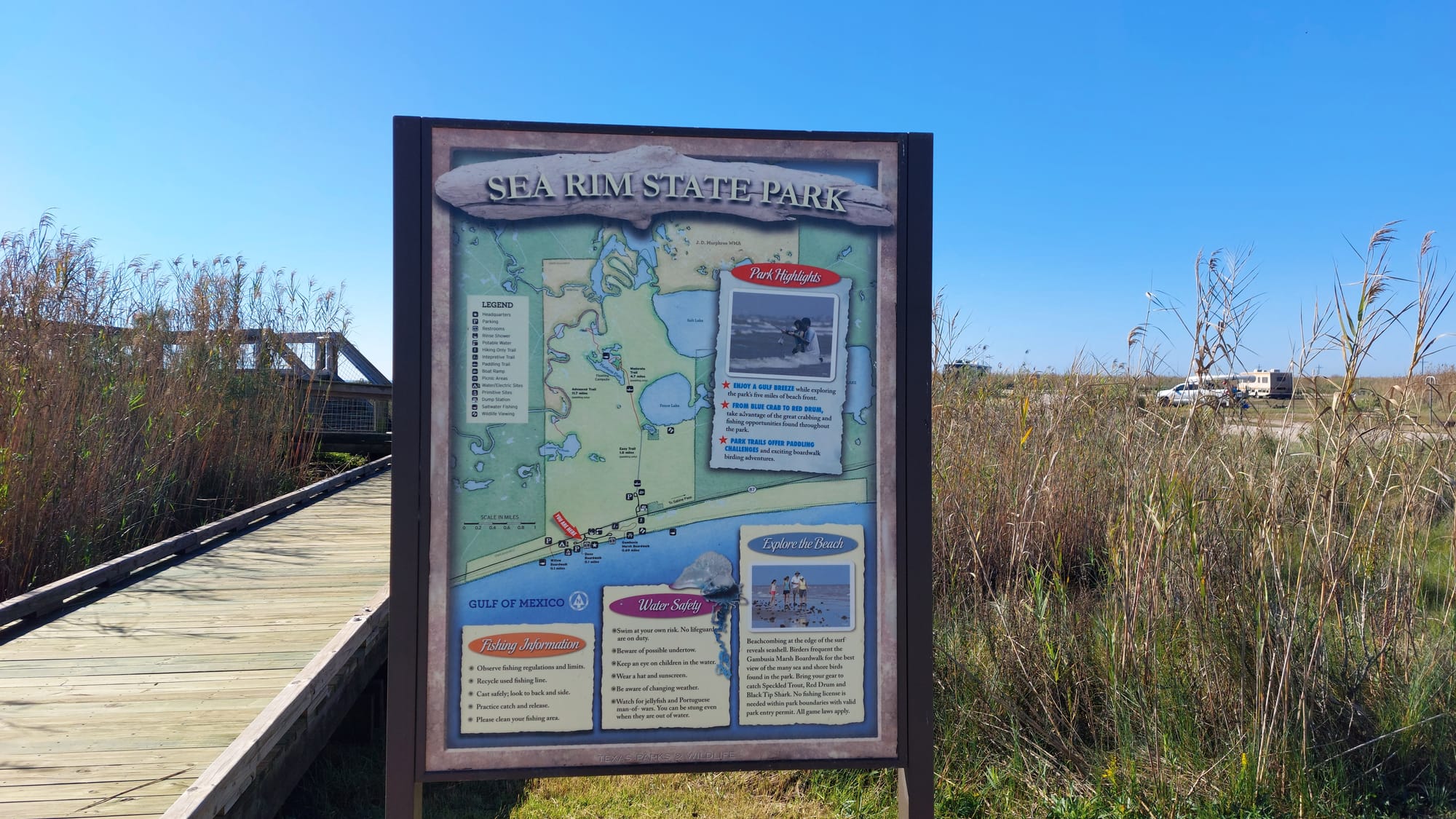
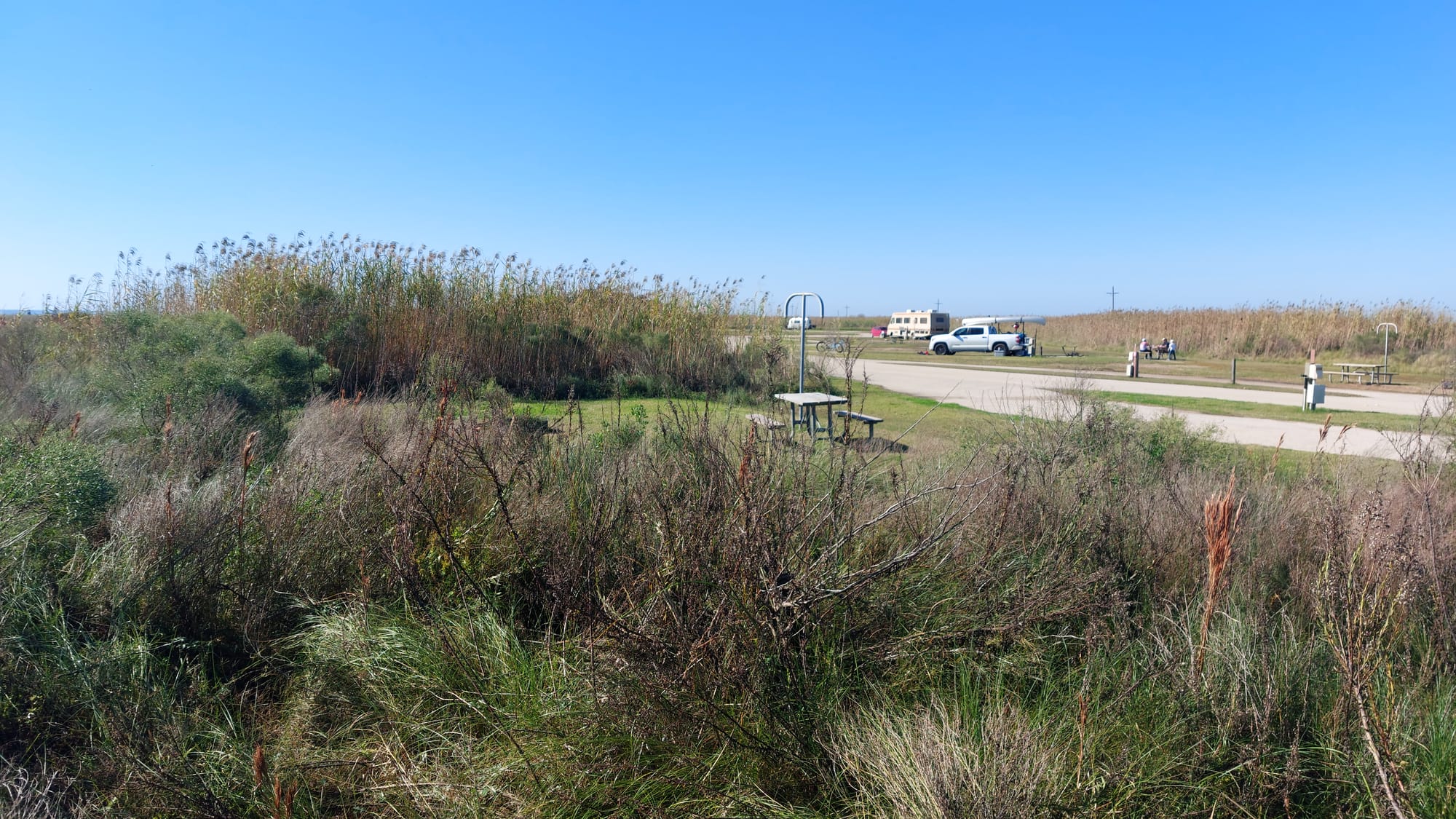
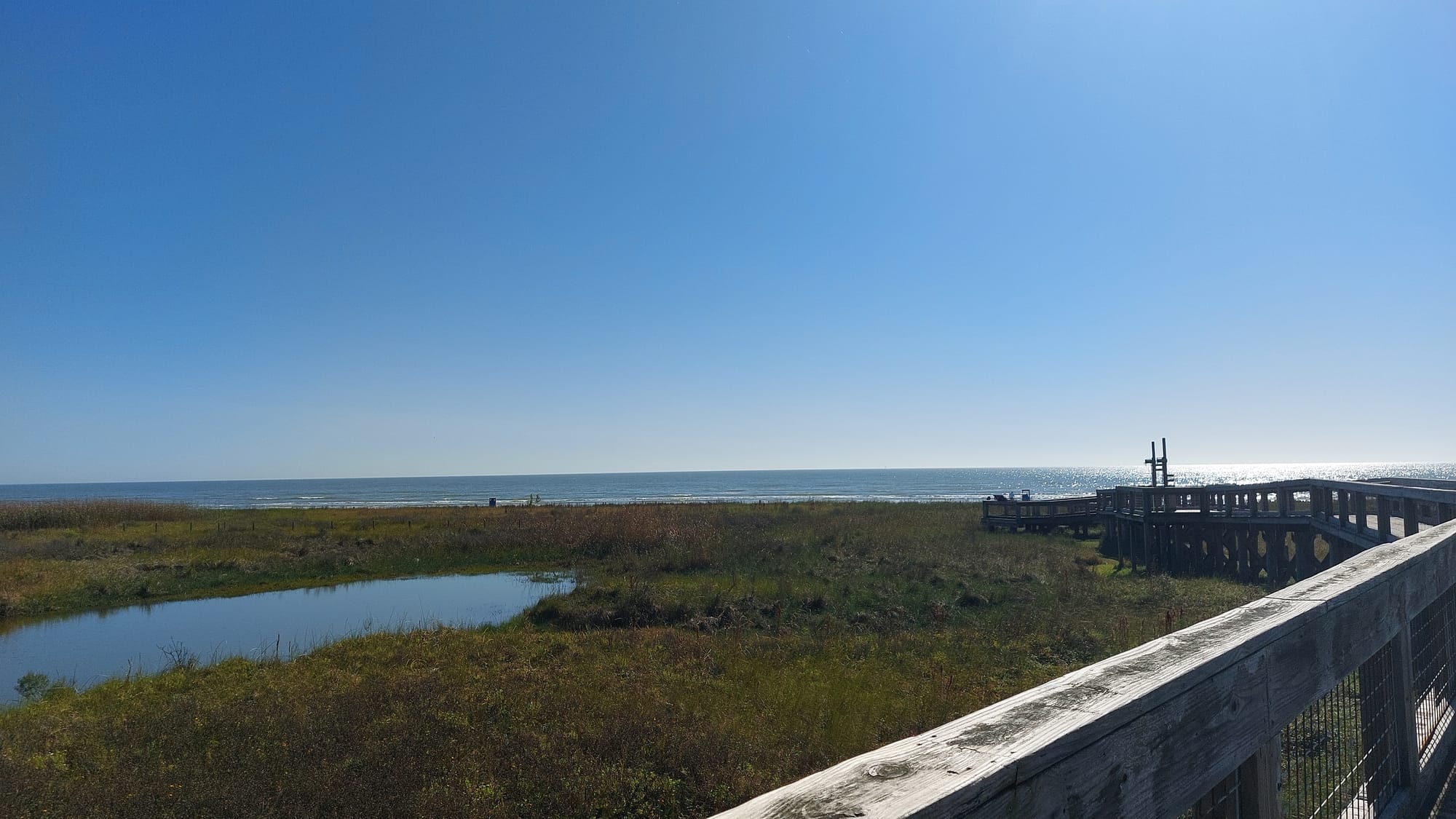
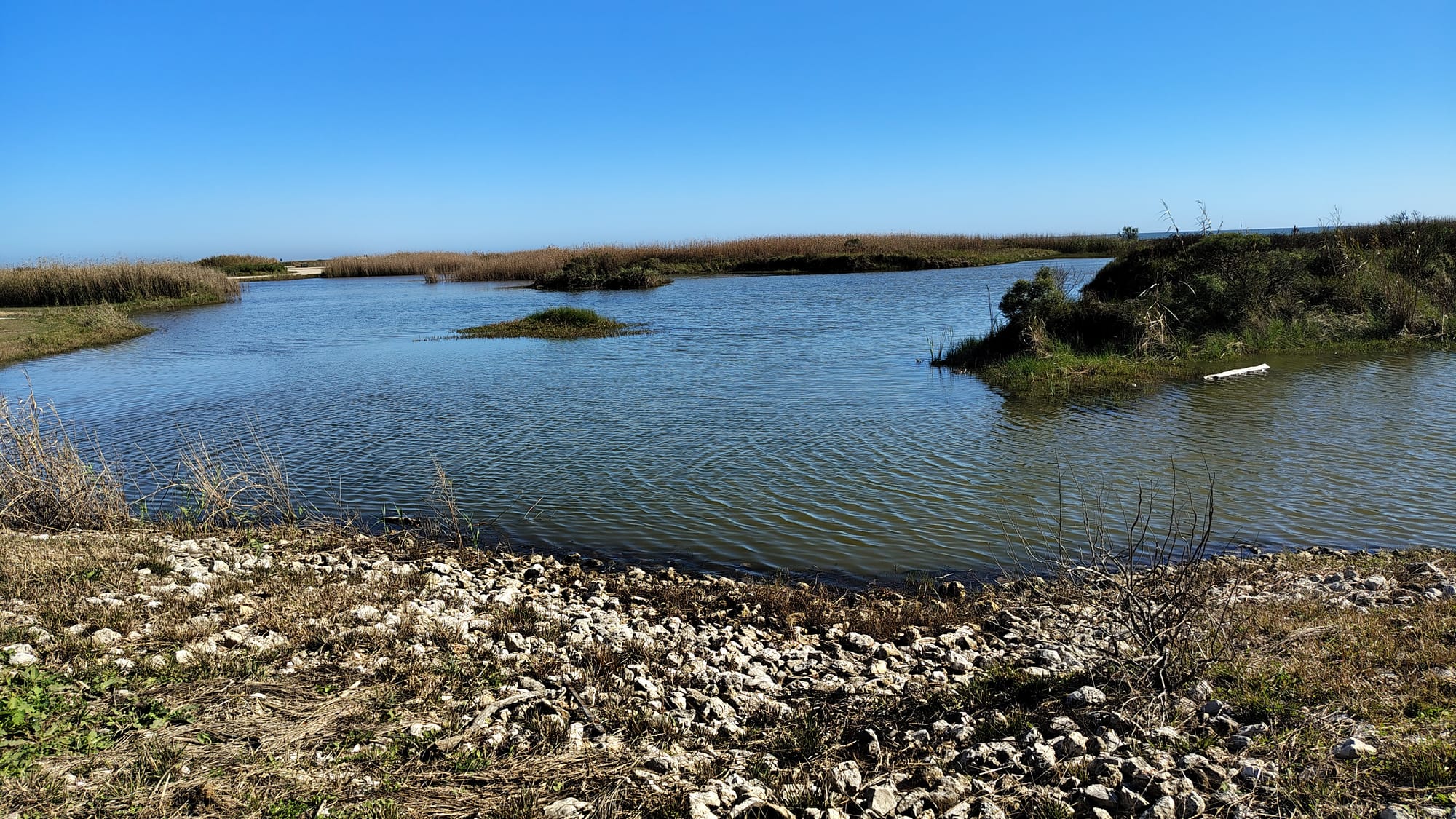
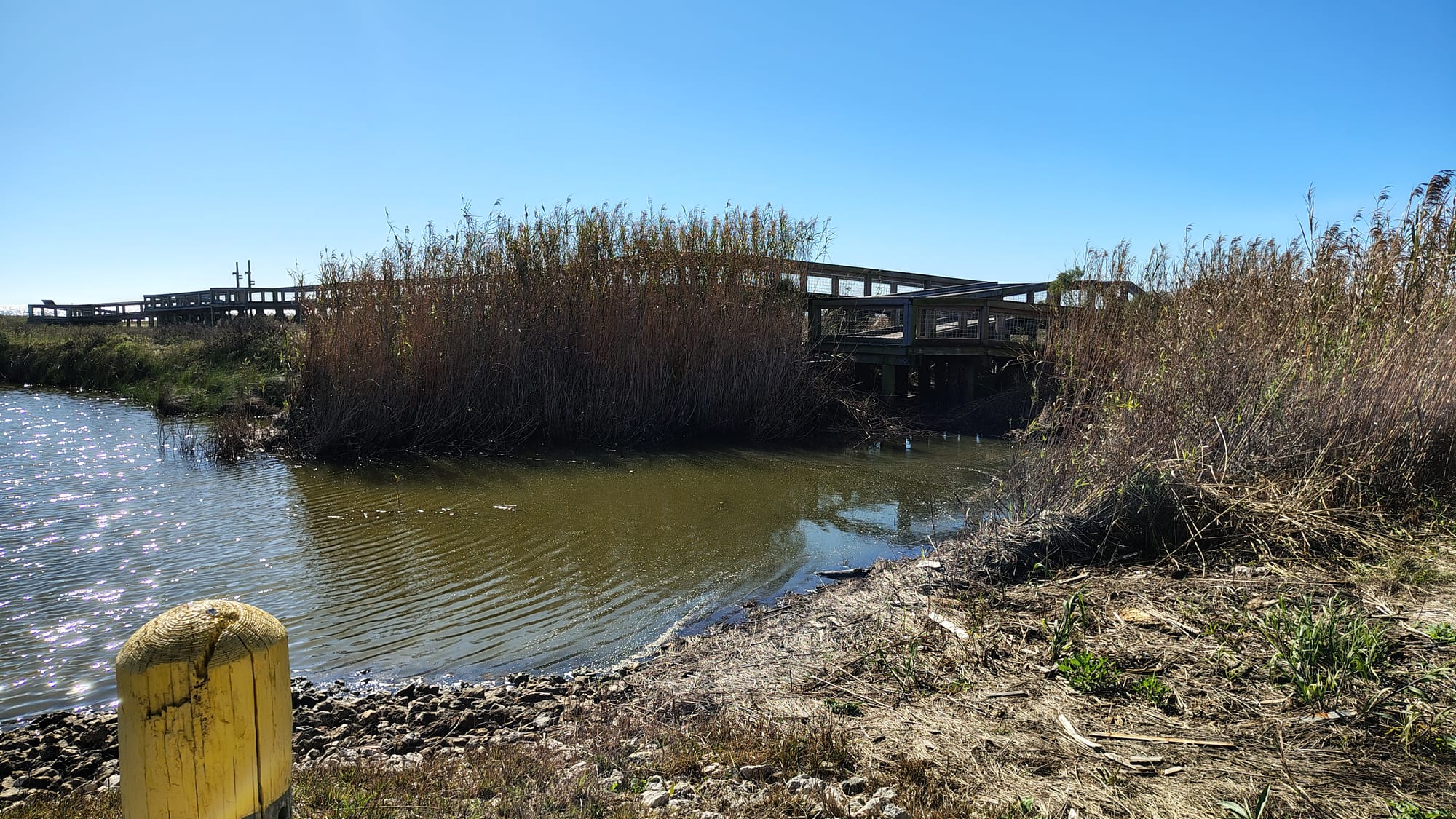
- The Marsh Trail:
- Length: 1 mile (round trip)
- Difficulty: Easy
- Description: This boardwalk trail takes you through the park's saltwater marsh, providing a great opportunity to observe wetland wildlife and plants.
- The Gulfside Trail:
- Length: 3 miles (one way)
- Difficulty: Moderate
- Description: This trail runs along the Gulf Coast, allowing visitors to enjoy views of the beach and the Gulf of Mexico. It’s perfect for those who want to explore the shoreline and observe coastal wildlife.
- The Prairie Trail:
- Length: 2 miles (round trip)
- Difficulty: Moderate
- Description: This trail winds through the park’s coastal prairie, offering a chance to experience the natural beauty of the area and spot local fauna.
- The Wetland Trail:
- Length: 1 mile (round trip)
- Difficulty: Easy
- Description: This trail is an easy walk through the park’s wetland areas, with excellent opportunities to observe wildlife such as birds and amphibians.
Additional Activities
- Fishing: The park has both saltwater and freshwater fishing opportunities, with a fishing pier available.
- Camping: There are campsites with electric and water hookups, as well as primitive campsites for a more rugged experience.
- Beach activities: The park’s beach is great for swimming, sunbathing, or just enjoying the view.
Sea Rim State Park offers a variety of outdoor activities for nature lovers and outdoor enthusiasts while preserving the delicate coastal environment. Whether you're hiking, birdwatching, or simply enjoying the beach, the park provides an exceptional opportunity to explore the beauty of Texas’ coastal ecosystems.
Sea Rim State Park Camping Fees (2025)
The camping fees at Sea Rim State Park vary depending on the type of campsite and amenities. Here are the general fees for 2025:
- Standard Campsites (with water and electric hookups):
- Fee: $25 per night
- These sites offer a combination of water and electricity for RVs or tent campers.
- Premium Campsites (closer to the beach or with better amenities):
- Fee: $30 per night
- These sites offer enhanced amenities and prime locations near the beach.
- Primitive Campsites (no hookups, more rustic):
- Fee: $15 per night
- These sites are ideal for more experienced campers seeking a more basic experience.
- Group Campsites:
- Fee: Varies (approximately $100 per night)
- Available for larger groups or families, these sites can accommodate multiple tents or RVs.
- Cabins:
- Fee: $125 per night
- If you prefer a more comfortable stay, the park offers small cabins for rent.
- Day-use Fees (for park entrance):
- Fee: $5 per person (age 13 and up)
Note: These fees are subject to change, and it’s always a good idea to check the official Texas Parks & Wildlife website for up-to-date information or to make reservations.
History of the Area
The history of the Sea Rim State Park area is rich and diverse, encompassing natural, cultural, and economic elements.
Pre-European Settlement
Before European settlers arrived in the area, the region around Sea Rim State Park was inhabited by Indigenous peoples, including the Karankawa and Atakapa tribes. These groups lived along the Texas Gulf Coast, relying on the region’s coastal marshes, waters, and wildlife for sustenance. The marshlands, beaches, and nearby waterways provided vital resources such as seafood, wild game, and plant life for their communities.
European Exploration and Settlement
Spanish explorers, such as Alonso Álvarez de Pineda in 1519, are credited with being some of the first Europeans to explore the Texas Gulf Coast. The area around Port Arthur, including Sea Rim State Park, was part of the broader region explored and later claimed by Spain, followed by France and eventually the United States as the country expanded westward.
The coastal area gradually became a part of the Republic of Texas after Texas gained independence from Mexico in 1836, and later the state of Texas upon its annexation into the United States in 1845. The region saw settlers arriving in the 19th century, establishing small fishing communities and using the coastal marshes for their livelihoods.
The Early 20th Century
The area around Sea Rim State Park began to experience more industrial development in the early 20th century. The nearby cities of Port Arthur and Beaumont developed into key hubs for the oil and petrochemical industries, which led to increased human activity along the coastline. These industries led to changes in the region’s natural landscape, although large portions of the coastline remained undeveloped and were used primarily for agriculture, fishing, and recreation.

Conclusion
The Texas Gulf Coast at Sea Rim State Park is basically untouched. Even though the oil and petrochemical industries have huge sites nearby, a visit to the park is like a step back into the past. We were able to visit the park while in Texas. We plan to go back and camp at some point. It is worth the trip.

